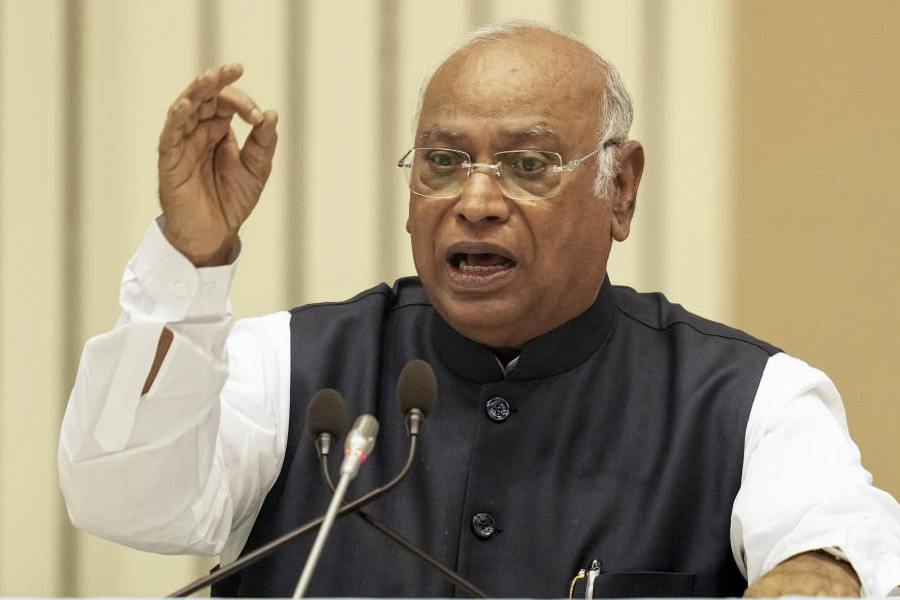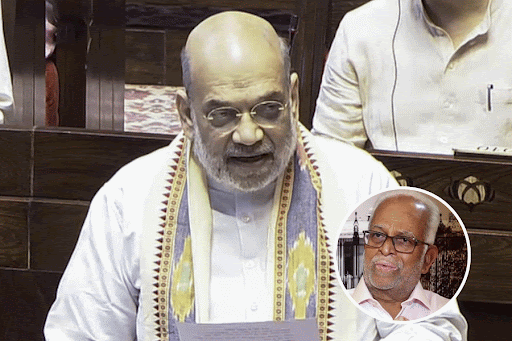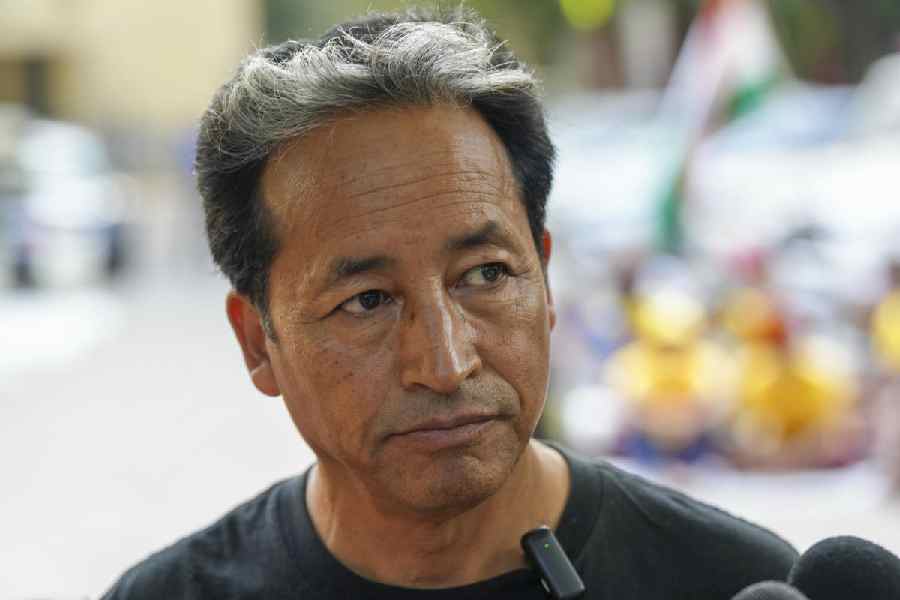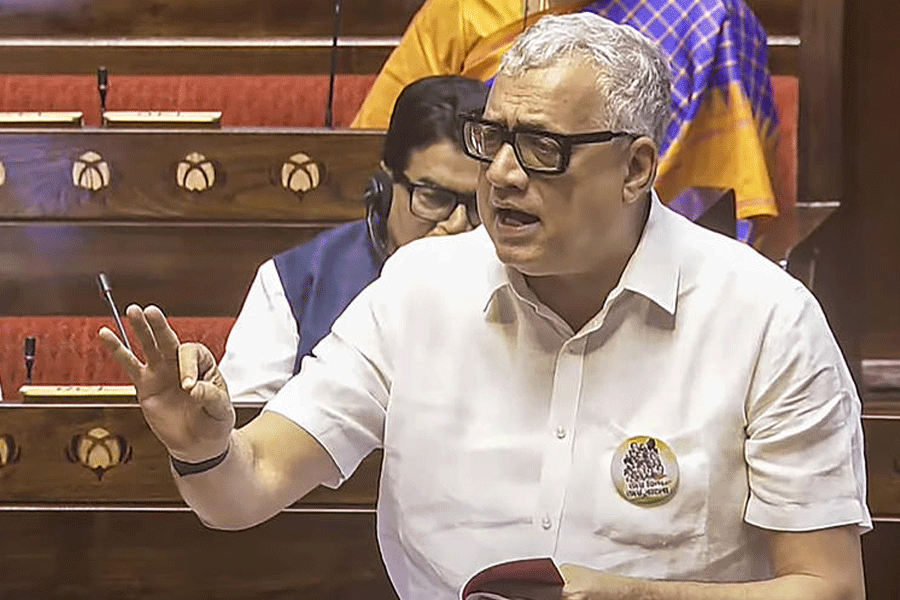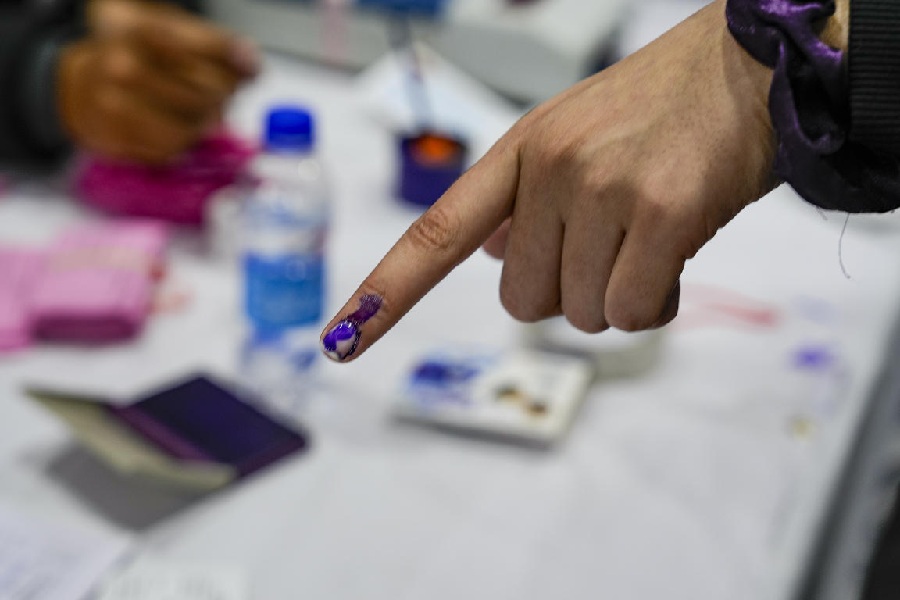 |
| Paul Mansions. Picture by Bishwarup Dutta |
Around the 1920s some beautiful apartment blocks were constructed close to Sambhunath Pandit Hospital just off Chowringhee. Their landlords were Indians — Bengalis in many cases — but these houses with spacious, beautiful, airy flats were rented out to Europeans, large numbers of whom lived and worked in pre-Independence Calcutta.
Some of the biggest and most gracious of these buildings are Edward Court on Chowringhee itself, now overshadowed by an ugly hotel that has come up on its lawn, Alexandra Court built in 1918 and being pulled down now to construct a highrise, Calcutta Mansion of 1921 vintage, 1/1 Bishop Lefroy Road, where Satyajit Ray shifted in 1970 and is beautifully maintained, and Paul Mansions at No. 6 Bishop Lefroy Road constructed in 1923, half of which has been given a lick of paint, while the side facing Lee Road looks as it would collapse any moment, but has remained in suspended animation for years.
The ground plus four Paul Mansions has verandahs on the Lee Road side of the building as well as on its other extreme end on the side facing Calcutta Mansion. The windows have filigreed awnings above them and segmented domes sit on the corners of the terrace. The building was partitioned in 1979 and that is quite obvious from its two painted and unpainted halves. Parasites have sprouted on the unpainted half, particularly at the rear of the building.
The two blocks together contain 20 flats each with two doors leading to the front door and back door connected with the service staircase and a verandah with balusters. The service staircase goes up to the terrace and is similar to the ones in Alexandra Court. The staircase for tenants is wooden and so are the spindle-shaped balusters. The lift in each block is also carved out of wood.
The floor is red with touches of marble. The glass in the skylights is white and pink. Each flat has two bedrooms with marble floors, two rooms each for male and female servants on the terrace and a garage. The luxury is understated, and instead of ornamentation it is the luxury of an abundance of space and rich materials. The entrance bays are pedimented and the low wall facing Bishop Lefroy Road has large flower-shaped openings.
The building is the property of the Butto Kristo Paul family of Sovabazar Street. Amal Krishna Paul, 74, says his father Sir Harishankar Paul, the then mayor of the Calcutta Municipal Corporation, had constructed the building meant to accommodate European executives who came to Calcutta often in connection with the Butto Kristo Paul’s medicine business.
This flourishing Bengali firm had an office in London at St Helen’s Place, besides an outlet in Burrabazar. The Cyclopaedia of India, Biographical, Historical, Administrative, Commercial, brought out in 1906 by Thacker, Spink & Co has an entry on this firm: “There is hardly another Bengali firm which has attained the same eminence or enjoys the same reputation and popularity as the firm of Butto Kristo Paul & Co.”
 |
 |
| The two halves of Paul Mansions; (below) a segmented dome. Pictures by Bishwarup Dutta |
Amal Krishnababu’s son, Amit, who looks after the side of the house which has been painted of late, says the plot — two bigha 11 kotha and nine sq ft — was bought from Calcutta Corporation and the construction was by Martin Burn. The other half of the building belonged to Harishankar’s eldest son, Bimal Krishna, and now belongs to his daughter Smritikana Datta.
Few old residents are left in Paul Mansions. Devika Datt Duncan’s parents had moved into their ground-floor flat in 1952. Her mother, Dipali Datt, was the daughter of the zamindar of Dighapatia in Bangladesh, and she and her husband lived here. The zamindar was the original tenant. Devika’s mother has moved out of this flat now.
Quite predictably they say that the house used to be beautifully maintained when top-brass European executives and leading physicians lived there. “The ladies were very rigid about timing. My son was not allowed to play in the backyard before five in the evening,” says Mrs Datt. Decline was inevitable after the Europeans left.
The other really old tenant is Sybil Datta, although she moved in in 1967. Heavy wooden bureaux, tables and sofas are ranged all over the polished red floor. The elder brother of her husband, Ranendra, was the poet Sudhindranath Datta, and before she moved in here, she lived in the ancestral home of the Dattas at Hatibagan.
“I am a Bengali,” she declares in fluent Bengali, while at the same time explaining that she is actually Jewish, but was born and raised here.
She recalled how her sister-in-law, Rajeshwari Datta, would sing Rabindrasangeet early in the morning without any accompaniment whenever she came to stay in this flat. This was Calcutta’s smart set. Sybil Datta remembers the lavish lifestyle of the Europeans, and the people she would socialise with. But she seems to have few regrets.
soumitradas@abpmail.com


